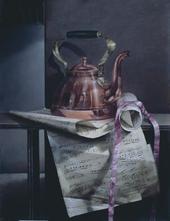
|
David Manzur: The Perfection
Hardback
Main Details
| Title |
David Manzur: The Perfection
|
| Authors and Contributors |
Edited by Paola Gribaudo
|
| Physical Properties |
| Format:Hardback | | Pages:456 | | Dimensions(mm): Height 300,Width 250 |
|
| Category/Genre | Art styles not defined by date |
|---|
| ISBN/Barcode |
9788857242637
|
| Classifications | Dewey:759.9861 |
|---|
| Audience | |
|---|
| Illustrations |
300 Illustrations, unspecified
|
|
Publishing Details |
| Publisher |
Skira
|
| Imprint |
Skira
|
| NZ Release Date |
16 April 2023 |
| Publication Country |
Italy
|
Description
As a young artist, Manzur experimented with Expressionism and abstraction, but he eventually found his true passion for figurative painting. He was inspired by multiple sources including Spanish Baroque artists such as Velazquez, Zurbaran and Sanchez Cotan; 19th-century American Realists like William Harnett and John F. Peto; and Italian Renaissance artists, with whom he shares the love for the human figure. Early in his career, he developed a personal style characterized by a masterful draftsmanship, a dramatic almost theatrical use of light and color, and the juxtaposition of volumes and transparencies. His subject matter has varied over the years. From still-lives to religious characters, from portraiture to equine representations, his paintings depict staged scenes that combine reality and fantasy in an oneiric atmosphere. Most recently, his series Obra Negra focuses on three main themes: the ghostly horse, the bull and the woman in red. These monumental canvases, in which he uses a sort of assemblage to attain volume, result in compelling images that are, by far, his most magnificent to date.
Author Biography
Born in Neira, Caldas, in 1929, of a Lebanese father, Salomon Manzur, and a Colombian mother, Cecilia Londono Botero, David Manzur spent his childhood and adolescence, in Equatorial Guinea, the Canary Islands, and Continental Spain. In 1947, he returned to his country of birth and settled in Bogota, where he studied art, music and acting. After a short theatrical career, he devoted himself to the visual arts. He studied at the Escuela de Bellas Artes de Bogota before attending The Art Students League and Pratt Institute, in New York. Among his many accomplishments he received two Guggenheim fellowships (1961-1962) and one from the Organization of American States (1964).
|